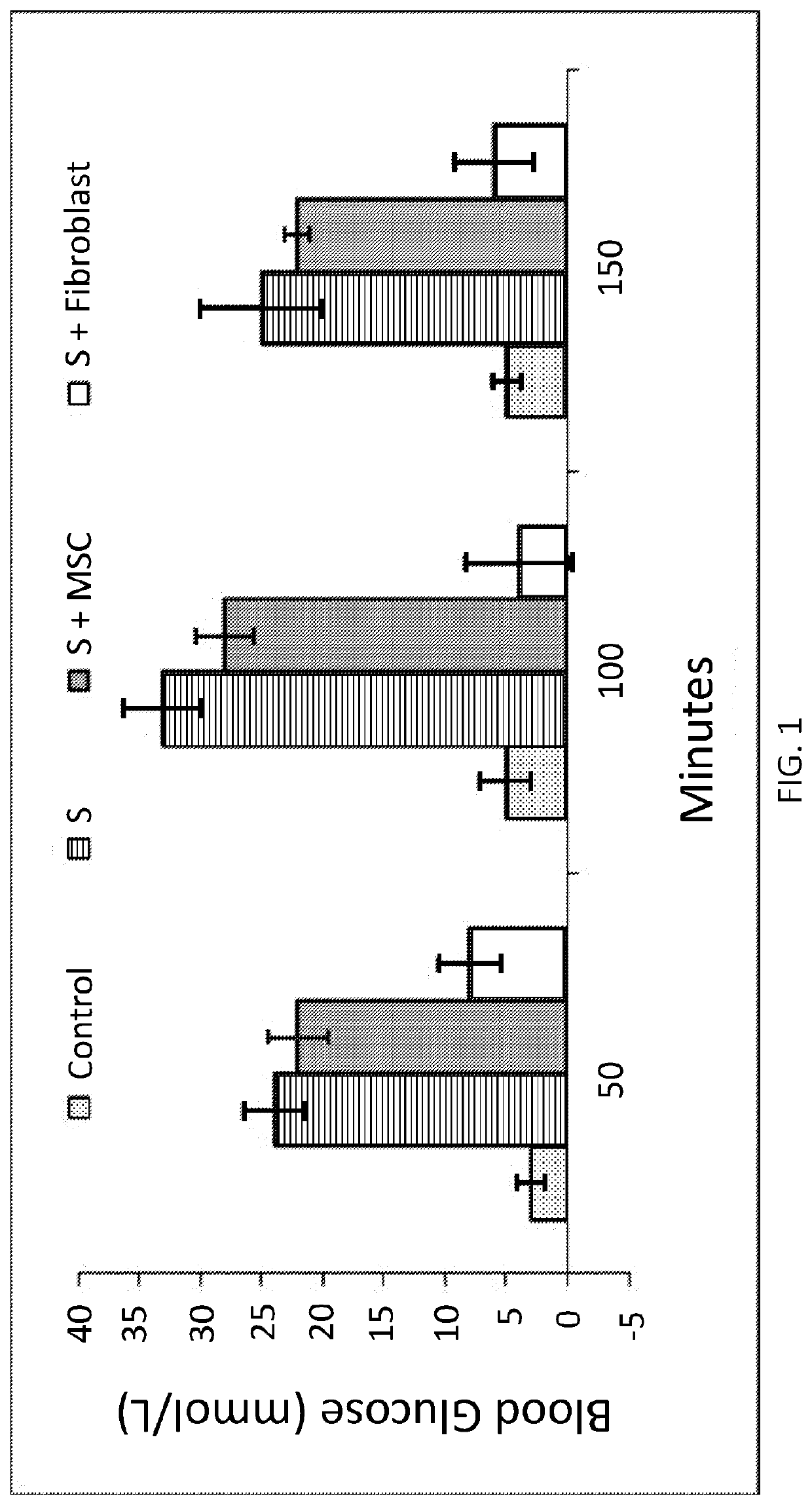Methods and compositions for treatment of type 1 diabetes using fibroblasts as facilitators of islet engraftment
a fibroblast and islet technology, applied in the field of diabetes medicine, can solve the problems of inability of current immunosuppressive treatments to protect transplanted islets long-term, widespread use of islet cell transplantation clinically, and high risk of whole pancreatic transplantation, so as to facilitate modulation of hepatic microenvironment, enhance engraftment, and function. the effect of enhancing viability and function
- Summary
- Abstract
- Description
- Claims
- Application Information
AI Technical Summary
Benefits of technology
Problems solved by technology
Method used
Image
Examples
example 1
Enhancement of Glucose Control by Islets Co-Transplanted with Fibroblasts
[0074]The beta cell toxic antibiotic streptozocin (STZ) (Sigma-Aldrich St. Lois, Mo., USA) was used to induce diabetes in BALB / c mice (65 mg / kg for 5 days). Islets were isolated from C57 / BL6 mice with stationary collagenase digestion and Ficoll density purification followed by handpicking. The BALB / c recipients (either sex) were diabetic for 1-3 wk before islet transplantation.
[0075]The recipients were anesthetized with Avertin (2,2,2,-tribromoethanol), a flank incision was made, and the left kidney was mobilized. A small incision was made in the upper pole of the kidney, and a pouch was created by separating the capsule from the kidney parenchyma with a fine glass probe toward the lower and anterolateral aspect of the kidney. Freshly isolated and purified islets (>95% purity) were brought to the center of the 10×35-mm petri dish in RPMI-1640 supplemented with 25 mM HEPES, 10% fetal calf serum, and 1% penicilli...
PUM
 Login to View More
Login to View More Abstract
Description
Claims
Application Information
 Login to View More
Login to View More - R&D
- Intellectual Property
- Life Sciences
- Materials
- Tech Scout
- Unparalleled Data Quality
- Higher Quality Content
- 60% Fewer Hallucinations
Browse by: Latest US Patents, China's latest patents, Technical Efficacy Thesaurus, Application Domain, Technology Topic, Popular Technical Reports.
© 2025 PatSnap. All rights reserved.Legal|Privacy policy|Modern Slavery Act Transparency Statement|Sitemap|About US| Contact US: help@patsnap.com

